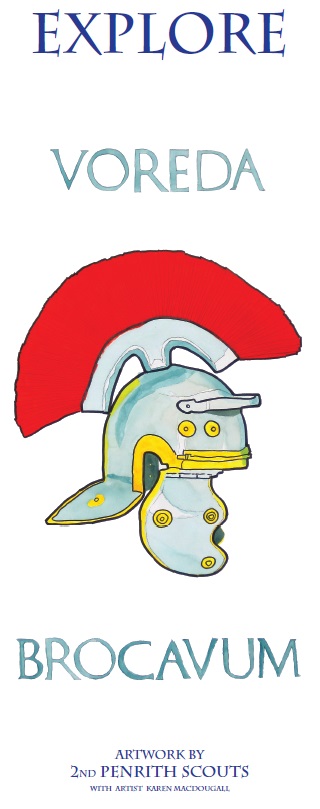Neolithic to Romans
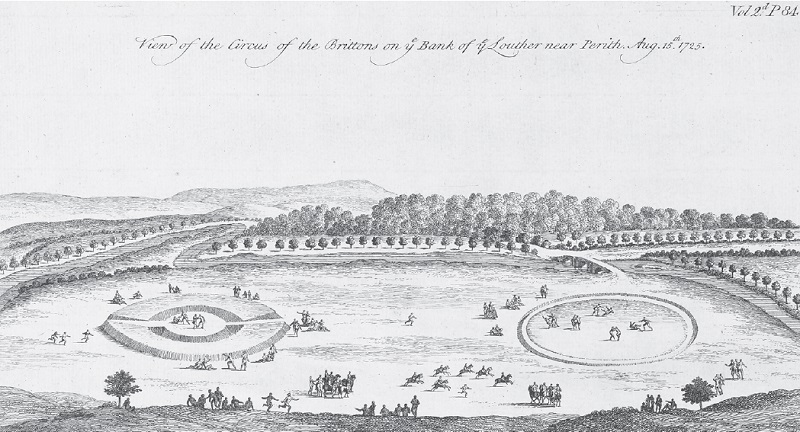
Bird’s eye view of King Arthur’s Round Table at Eamont Bridge, after Stukeley, 1725
Bodleian Library
Penrith lies at a crossroads of ancient routes and has witnessed the passage of people since the end of the last Ice Age to the present day. Each society since Neolithic times has left behind a legacy that is still evident today.
During the Neolithic period (c.4000 to c.2000 BC), there was a change from a nomadic hunter-gatherer lifestyle to a more agrarian way of life. Beautiful polished stone axes were produced in the Lake District and used to clear lowland forests for cereal cultivation and pasture for domesticated animals.
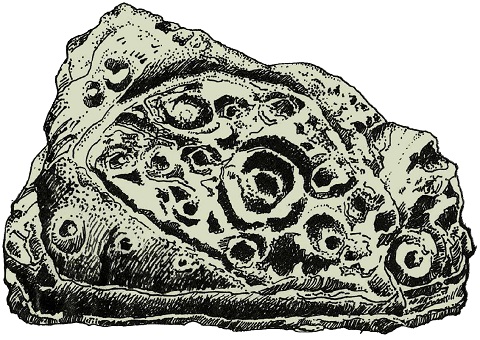
Honeypot Stone. Original stone in Tullie House Museum & Art Gallery, Carlisle.
Illustration by Juliet Whitworth
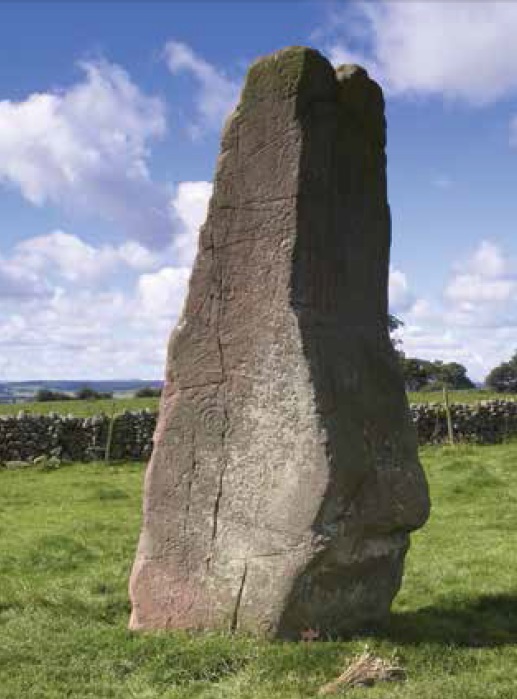
Long Meg
Dreamstime Photographic Library
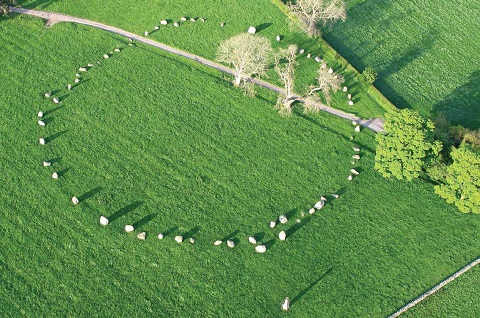
An aerial view of Long Meg and her Daughters
© Simon Ledingham
During the Bronze Age (2,000−800 BC), stone axes began to be replaced by bronze tools, and decorated clay pots were commonly found as grave goods. By the Iron Age (800 BC to AD 100), society was more organized and people lived in small enclosed settlements.
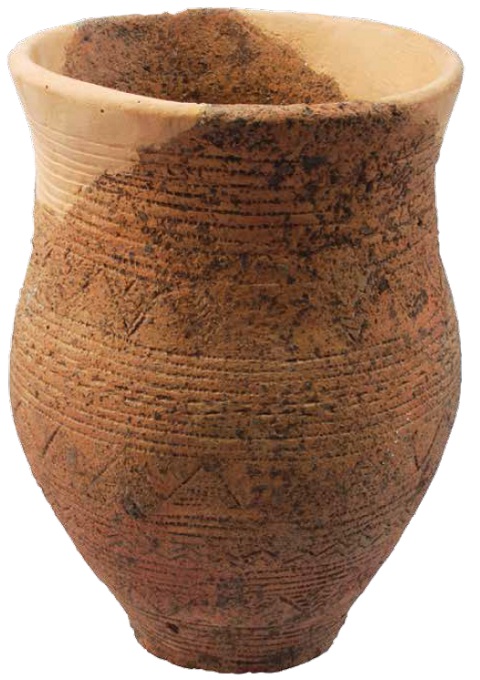
Bronze Age beaker
Tullie House Museum & Art Gallery Trust, Carlisle
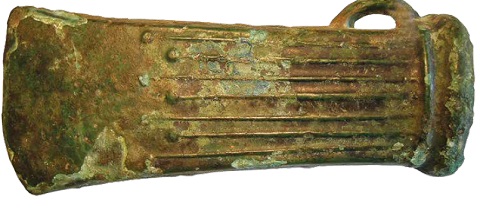
Bronze Age axehead
Penrith and Eden Museum
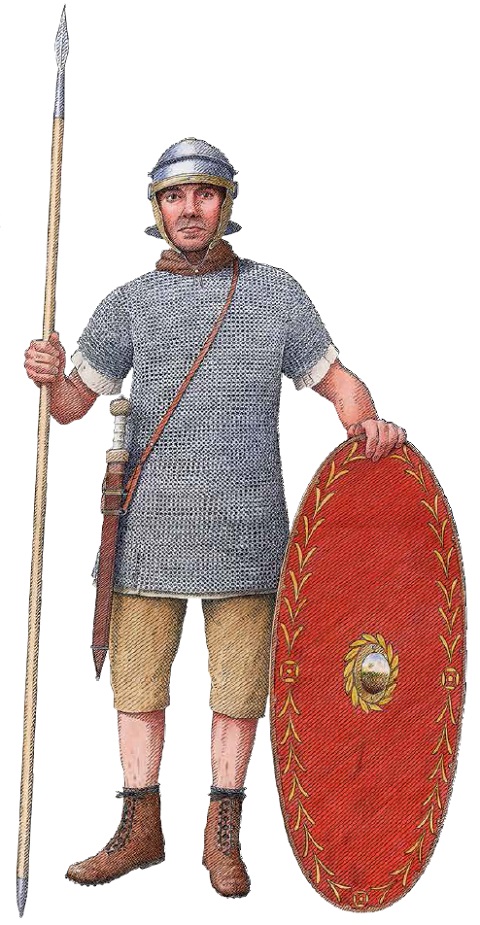
Roman auxiliary soldier, c. AD 125
© English Heritage
The Roman conquest of Britain began in AD 43, but it was not until around AD 72 that the Romans arrived in Cumbria. Julius Agricola, the Governor of Britain from AD 77 to 84, established many of the first forts, linked by a network of Roman roads. The forts guarded strategic communication routes and river crossings, and suppressed uprisings by native Iron Age tribes. Near Penrith are the forts of Voreda (Old Penrith) at Plumpton and Brocavum at Brougham.
The forts were linked by a network of Roman roads. Penrith lies at a crossroads of these routes, with Roman roads leading north to Luguvalium (Carlisle) and south through the Lune Gorge. The A66 road east follows the old Roman road to York, whilst another Roman road led from Brocavum along the summit of ‘High Street’ to Galava at Ambleside.
The Romans established control over the region for the next 300 years before the withdrawal of Roman administration around AD 410.
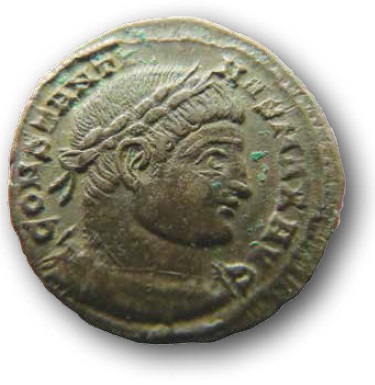
Roman coin depicting Emperor Constantine, dated AD 332. Found at Low Borrow Bridge, Tebay
Penrith and Eden Museum
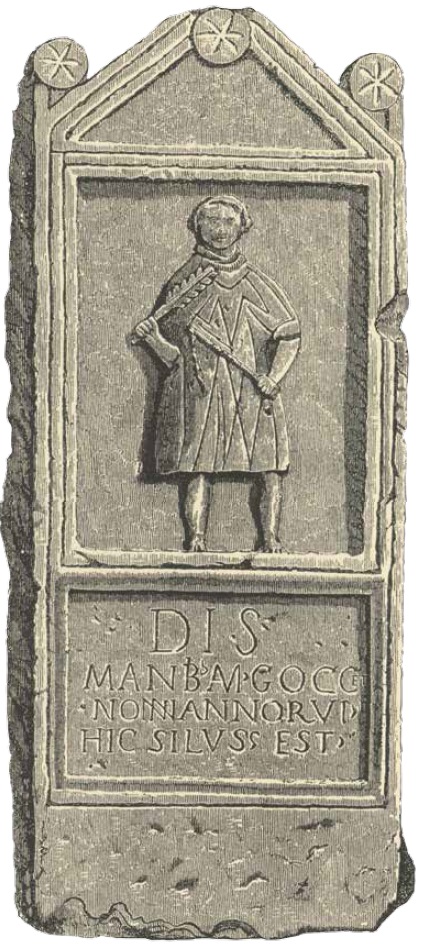
Translation: To the spirits of the departed and of Marcus Cocceius Nonnus, aged 6. He lies buried here
Roman tombstone from Voreda.
Engraving from The Stately
Homes of England by Llewellynn Jewitt and S C Hall (Virtue, 1877)
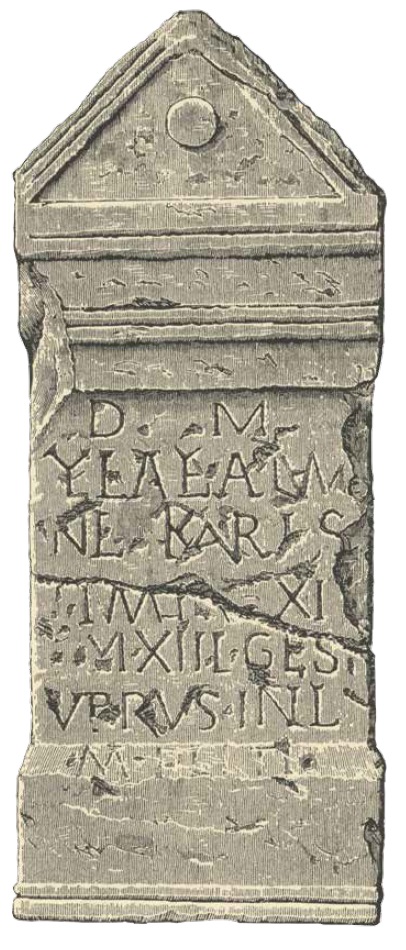
Translation: To the spirits of the departed, Ylas, his dearest foster child, aged 13. Claudius Severus, legionary tribune set this up
Roman tombstone from Voreda.
Engraving from The Stately
Homes of England by Llewellynn Jewitt and S C Hall (Virtue, 1877)



